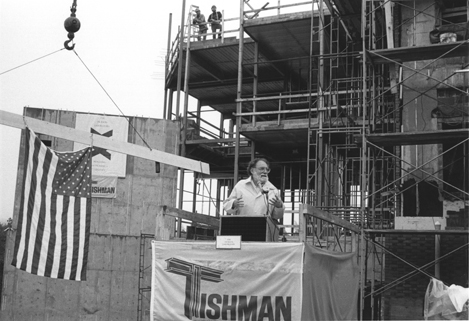
Faculty Research 1990 - 1999
Characteristics of long-term human thyroid peroxidase autoantibody secretion in scid mice transplanted with lymphocytes from patients with autoimmune thyroiditis.
Document Type
Article
Publication Date
1992
Keywords
Animal, Autoantibodies, Disease-Models-Animal, Female, Human, IgG, Immunotherapy-Adoptive, Iodide-Peroxidase: im, Lymphocytes: im, tr, Mice, Mice-SCID, Middle-Age, SUPPORT-NON-U-S-GOVT, SUPPORT-U-S-GOVT-P-H-S, Thyroiditis-Autoimmune: im, Time-Factors
First Page
317
Last Page
323
JAX Source
Int Arch Allergy Immunol 1992;98(4):317-23
Grant
DK28242/DK/NIDDK, DK35674/DK/NIDDK, AI30389/AI/NIAID
Abstract
We have explored scid mice as an in vivo model to study lymphocyte function and autoantibody production in patients with autoimmune thyroiditis and thyroid peroxidase (hTPO) autoantibodies. Patient's peripheral blood mononuclear cells (PBMC) were transplanted into scid mice via intraperitoneal injections and human immunoglobulin G (hIgG) and thyroid autoantibody levels in the murine sera were monitored for a minimum of 3 months after transplantation. Human IgG reached maximum serum levels of > 3,000 micrograms/ml (mean +/- SEM = 1,199 +/- 354 micrograms/ml) after an average of 6.5 weeks. In reconstituted mice (hereafter named At-Scid-hu) substantial titers of anti-hTPO of up to 0.51 (ELISA index, normal range < 0.02) were observed over a period of 1-2 months, followed by a gradual decline. Immunization of AT-Scid-hu mice with immunogenic, recombinant human hTPO (rec-hTPO) failed to enhance hTPO-Ab levels. Furthermore, there was no correlation between the magnitude of human IgG in the murine serum and concomitant levels of anti-hTPO. Murine thyroid function was unaffected by the transplantation of PBMC, as evidenced by normal serum thyroxine (T4) levels, and lack of specific pathologic changes in the thyroid. These data indicate, for the first time, the potential for longer-term human thyroid autoantibody secretion in the scid mouse reconstitution model allowing for further investigation of the regulatory factors inpinging on the human B cells surviving in the murine environment.(ABSTRACT TRUNCATED AT 250 WORDS)
Recommended Citation
Martin A,
Kimura H,
Thung S,
Fong P,
Shultz LD,
Davies TF.
Characteristics of long-term human thyroid peroxidase autoantibody secretion in scid mice transplanted with lymphocytes from patients with autoimmune thyroiditis. Int Arch Allergy Immunol 1992;98(4):317-23

